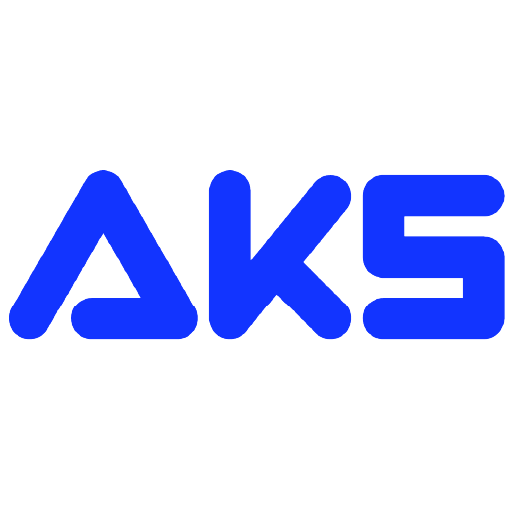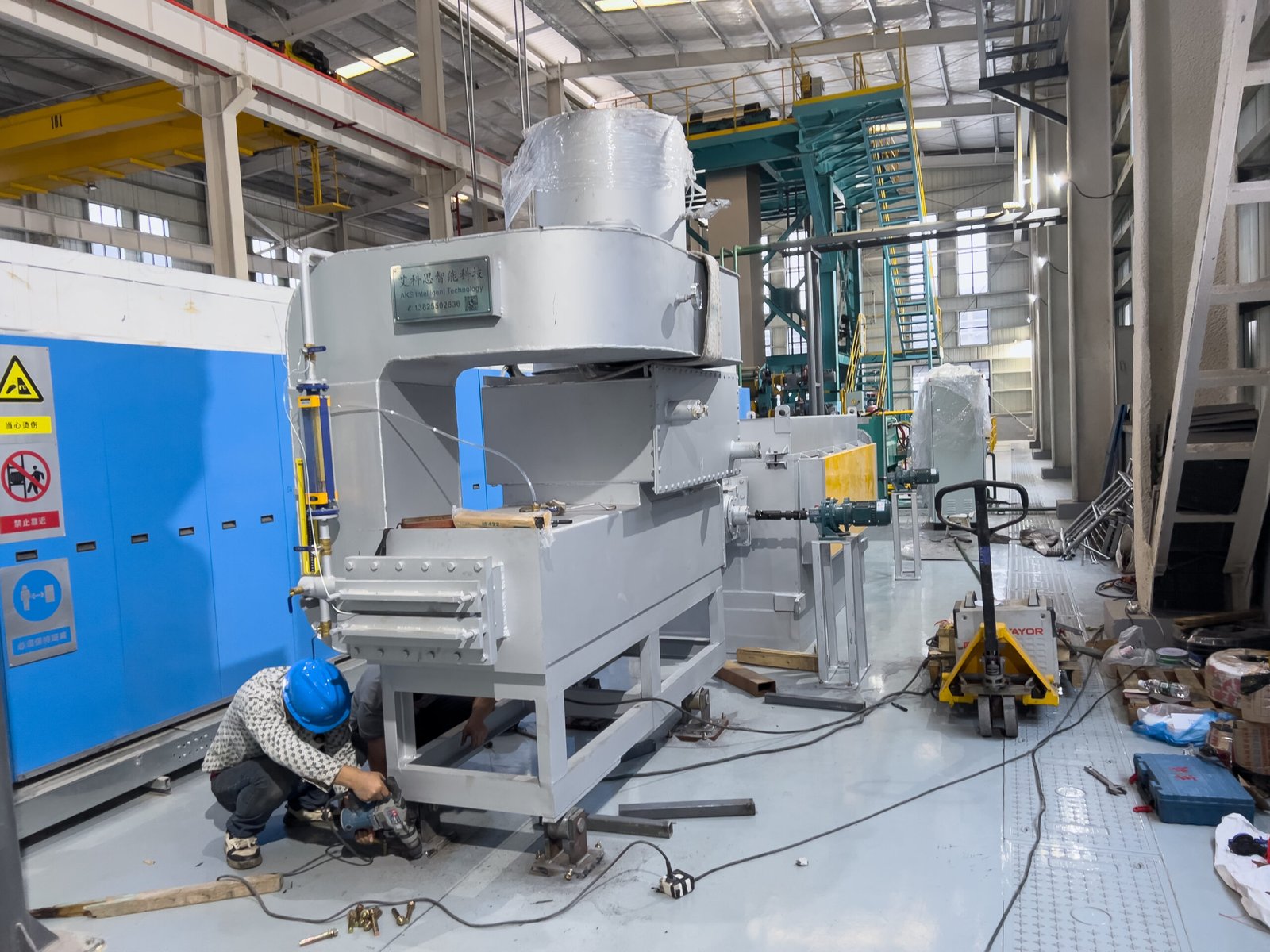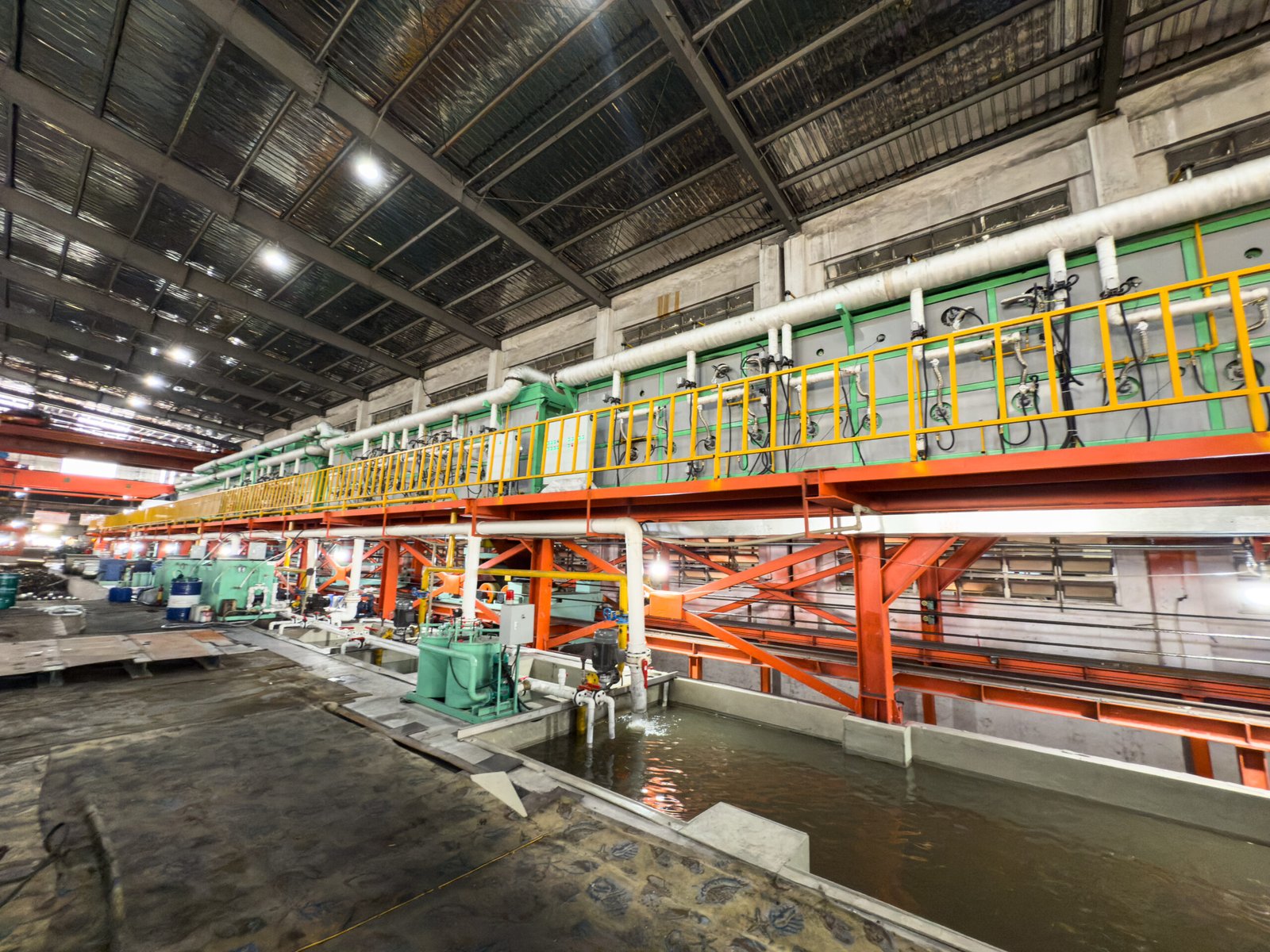How to Optimize Continuous Line Layout and Key Parameters for Bright Annealing Stainless Steel Strip?

Are you struggling to achieve a consistent, mirror-like finish on your stainless steel strip? This common problem often leads to high rejection rates and production delays, hurting your bottom line. The solution lies in optimizing your continuous annealing line layout and mastering its key operational parameters.
Optimizing a continuous bright annealing line for stainless steel strip involves a holistic approach focused on the entry and exit accumulator sections, furnace design for uniform heating, advanced rapid cooling systems, and precision tension control. The layout—whether horizontal or vertical—must be tailored to your specific product and facility.
I’ve seen many manufacturers invest heavily in a new furnace, only to be disappointed by the results because the overall line design was an afterthought. The journey of the steel strip through the entire process is what defines its final quality. Let’s explore how to get it right.
This isn’t just a matter of buying the latest equipment; it’s about an integrated engineering philosophy1 that marries metallurgy with mechanics and automation. In high-stakes industries like automotive parts or premium kitchenware, precision is not optional. A small oversight in layout can lead to recurring defects that halt production. The challenge lies in designing a system where every component, from the uncoiler to the recoiler, works in perfect harmony to protect the delicate surface of the steel and ensure a flawless metallurgical transformation. Let's break down how to build such a system.
What is the significance of bright annealing in the stainless steel strip industry?
Your customers demand a perfect, reflective surface, but your processed stainless steel comes out dull and oxidized. This leads to costly and environmentally harsh secondary cleaning processes like acid pickling, reducing your product's value. Bright annealing is the key to achieving that premium finish directly.
Bright annealing is a heat treatment process performed in a controlled atmosphere furnace, typically containing hydrogen and nitrogen. It heats and cools the stainless steel to restore its ductility and relieve internal stresses without causing surface oxidation, resulting in a clean, bright, and corrosion-resistant finish.
The difference between a standard annealed finish and a bright annealed finish is immediately visible, but the true value extends far beyond aesthetics. It’s about creating a product that is metallurgically sound and ready for high-end applications right out of the furnace. I recall a client in the white goods sector who was struggling with surface imperfections that showed up after forming. Their issue wasn't the steel's grade but the annealing process itself. By switching to a continuous bright annealing line, they not only eliminated the post-annealing pickling step but also saw a significant reduction in forming defects, because the material's properties were far more uniform. This transformation highlights that bright annealing isn't just a finishing step; it's a foundational process that dictates the quality, performance, and ultimate value of the final product. It redefines what's possible in terms of manufacturing efficiency and product excellence.
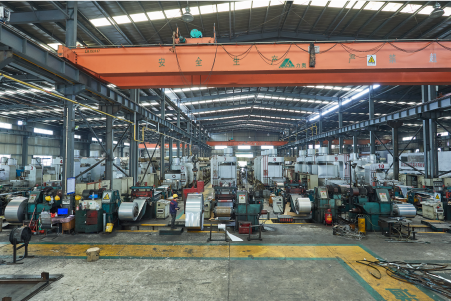
The decision to invest in a bright annealing line is a strategic one, impacting everything from production workflow to market competitiveness. The process is far more than a simple heat-and-cool cycle; it’s a precise, multi-stage journey that re-engineers the steel's fundamental properties while perfecting its surface. For manufacturers in sectors like automotive components, electronics hardware, or high-end appliances, the mirror-like finish and enhanced formability are non-negotiable quality markers that command a higher price and build brand reputation. By understanding the core pillars of its significance—metallurgical integrity, surface quality, and economic efficiency—you can better appreciate why optimizing the entire line layout is so critical to success. It's the difference between producing a commodity and creating a high-value, specification-driven product.
The Metallurgical Transformation and Its Impact on Mechanical Properties
At its core, bright annealing is a process of metallurgical recovery. Cold rolling, a necessary step to achieve the desired thickness and surface smoothness, significantly hardens the stainless steel strip, making it brittle and difficult to form. This work-hardened state is characterized by an elongated and stressed grain structure. Bright annealing reverses this by recrystallizing the grains into a softer, more uniform equiaxed structure. The process involves heating the strip to a precise temperature (e.g., typically 1050-1150°C for austenitic grades like 304) to initiate this recrystallization, followed by rapid cooling to lock in the new microstructure. This restores the material's ductility and formability, which is critical for downstream processes like deep drawing or stamping.
The impact on mechanical properties is profound. For a typical Type 304 stainless steel strip, the tensile strength can decrease from over 1000 MPa in a hard-rolled state to around 550-600 MPa after annealing, while the elongation can increase from less than 5% to over 40%. This transformation is what allows the steel to be bent, stretched, and formed into complex shapes without cracking. A client producing automotive exhaust components found that inconsistent annealing was causing fractures during the hydroforming process. By implementing a bright annealing line with precise thermal profiling, we helped them achieve consistent ductility, reducing their scrap rate by over 15% and ensuring the integrity of their final parts.
Furthermore, the process relieves internal stresses that are locked into the material during rolling and slitting. These stresses can cause warping or distortion in the final product, especially after cutting or welding. By performing a full anneal, the strip becomes dimensionally stable, a crucial attribute for precision components used in electronics or medical devices. The control over this metallurgical transformation is therefore a primary driver of the value derived from the bright annealing process.
Achieving a Flawless, High-Value Surface Finish
The "bright" in bright annealing refers to the shiny, reflective surface that is preserved throughout the heat treatment. This is achieved by carrying out the entire process within a meticulously controlled protective atmosphere. The furnace chamber, or muffle, is continuously purged with a mixture of high-purity hydrogen2 (H₂) and nitrogen (N₂). The hydrogen acts as a reducing agent, reacting with and removing any residual surface oxides, while the inert nitrogen prevents new oxidation from occurring at elevated temperatures. The dew point of this atmosphere gas is kept extremely low (typically below -60°C) to ensure there is no water vapor present to react with the chromium in the stainless steel.
This protection from oxidation is what eliminates the need for post-annealing acid pickling—a process that is not only costly but also generates hazardous waste. A bright annealed surface is inherently clean, smooth, and ready for use in applications where aesthetics are paramount, such as decorative trim, kitchen appliances, and architectural panels. I worked with a manufacturer of high-end sinks who was able to eliminate their entire polishing department after installing a modern bright annealing line. The finish straight from the furnace was so superior that it met their customers' exacting standards with minimal secondary processing.
The economic advantage is clear. By avoiding pickling, companies save on chemical costs, waste treatment expenses, and the associated labor. More importantly, they avoid the microscopic pitting and dulling that pickling can cause, resulting in a visually superior product. The flawless surface also enhances the material's passive layer, improving its natural corrosion resistance. This dual benefit of aesthetic perfection and enhanced performance is a key reason why bright annealing has become the industry standard for high-quality stainless steel strip.
Economic Implications for Downstream Manufacturing
The economic benefits of a properly executed bright annealing process ripple through the entire manufacturing value chain. While the initial capital investment in a continuous bright annealing line is significant, the return on investment is driven by substantial long-term operational savings and increased product value. The most immediate saving comes from the elimination of the pickling and passivation stages, which are resource-intensive and create significant environmental compliance burdens.
Consider a mid-sized stainless steel processor running 20,00T of strip annually. The cost of acid, water, waste treatment, and associated labor for a pickling line can easily exceed several hundred thousand dollars per year. A bright annealing line removes this entire cost center. Furthermore, material yield is improved. Pickling removes a microscopic layer of the steel surface, resulting in material loss. While small, this adds up over thousands of tons. Bright annealing, being a non-subtractive process, preserves the material, maximizing yield from the raw coil.
The following table provides a simplified comparative analysis of the economic impact:
| Cost Factor | Traditional Anneal & Pickle | Bright Annealing Process | Economic Impact |
|---|---|---|---|
| Chemical Consumables | High (Acids, Neutralizers) | Minimal (H₂, N₂ gases) | Significant annual savings |
| Waste Treatment | High (Acidic Effluent) | None | Reduced compliance & disposal costs |
| Material Yield | Lower (~0.5-1% loss) | Maximized (No surface removal) | Increased saleable product per ton |
| Labor Requirement | Higher (Multiple stages) | Lower (Integrated, automated line) | Reduced operational expenditure |
| Product Value | Standard Finish | Premium Bright Finish | Higher selling price & market access |
Beyond these direct cost savings, the consistency and quality of bright annealed strip reduce variability in downstream processes. Stamping, forming, and welding operations run more smoothly with material that has uniform mechanical properties and a clean surface. This leads to higher throughput, less equipment downtime, and a lower final part rejection rate, creating a powerful cumulative economic advantage.
Bright annealing eliminates picklingTrue
Bright annealing's controlled atmosphere prevents oxidation, making acid pickling unnecessary for surface cleaning.
Annealing increases steel hardnessFalse
Bright annealing softens cold-rolled steel by recrystallizing grains, reducing tensile strength while improving ductility.
How are continuous line layouts currently structured for bright annealing processes?
You need to install or upgrade an annealing line, but the variety of layouts—horizontal, vertical, J-type—is confusing. Choosing the wrong configuration for your product mix and factory space can lead to years of production headaches and inefficiencies. Understanding the fundamental structures is the first step.
A typical continuous bright annealing line is structured with three main zones: an entry section for coil handling and joining (uncoilers, welder), a central furnace section for heat treatment (heating, soaking, cooling), and an exit section for tension control and coiling (exit accumulator, recoiler).
The specific arrangement of these zones3, particularly the furnace, defines the layout. The choice between a horizontal or vertical furnace orientation4 is one of the most critical decisions, driven by factors like material gauge, required line speed, and available plant footprint. I’ve seen this choice make or break an operation. For instance, a client processing very thin, delicate stainless steel for electronics initially considered a horizontal layout due to lower ceiling height. However, we demonstrated how a compact vertical design would be far superior in preventing the micro-scratches and tension issues that were plaguing their existing, older line. This initial layout decision is fundamental, as it dictates the flow, efficiency, and quality capabilities of the entire investment for decades to come. It’s crucial to analyze the pros and cons of each primary layout type in the context of your specific production goals.
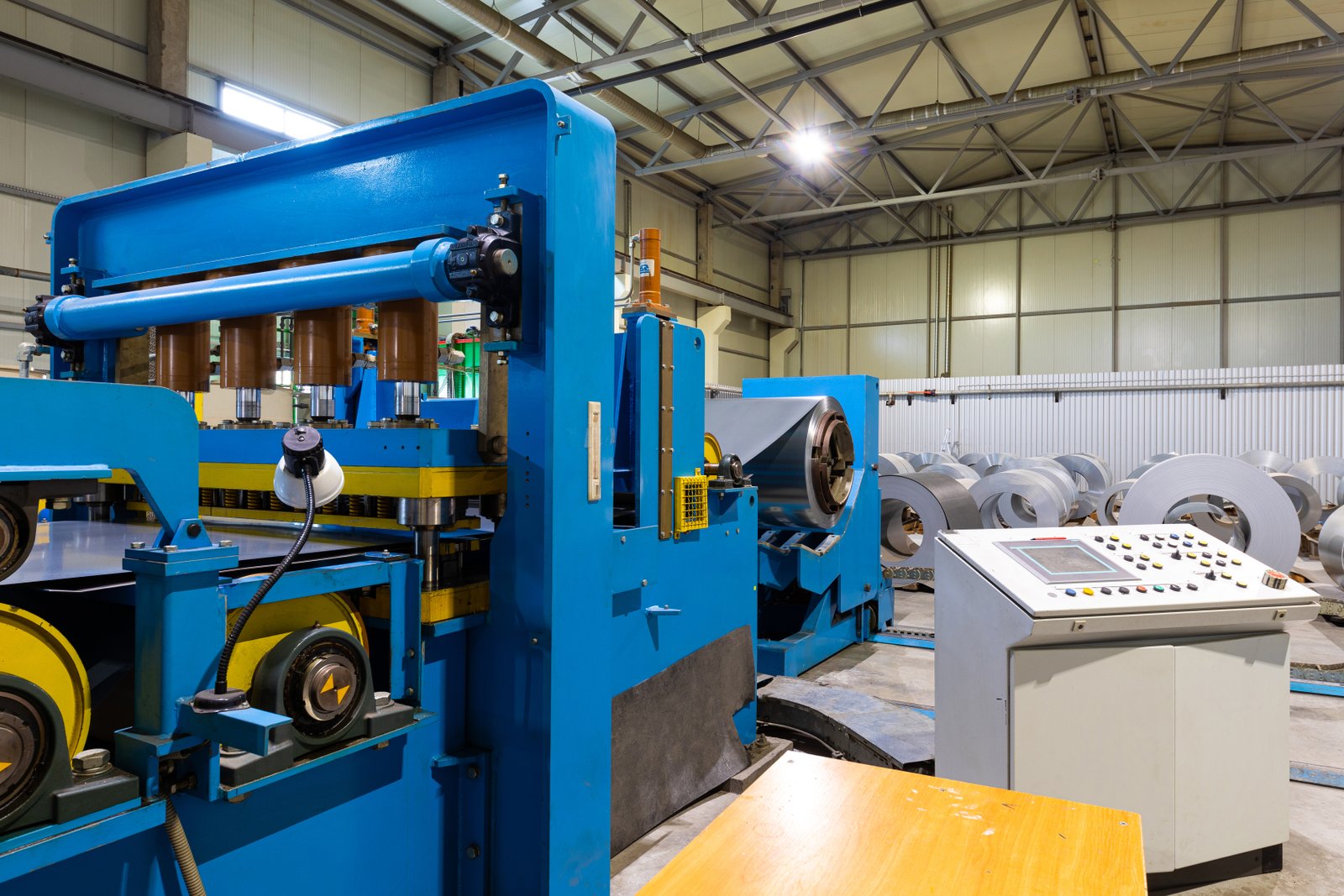
The architecture of a continuous annealing line is a masterclass in process engineering, where every meter of the line has a specific purpose. The seamless integration of mechanical handling and thermal processing is what enables the high-throughput production of superior quality strip. While the furnace is the heart of the operation, the entry and exit sections are the critical arteries that ensure it can perform its job without interruption or compromise. A poorly designed entry section can introduce tension fluctuations that cause defects before the strip even reaches the heat, while an inadequate exit section can damage a perfectly annealed product. Therefore, a deep dive into each layout configuration is essential for any production manager or engineer aiming to commission a new line or optimize an existing one.
The Horizontal Furnace Layout: A Deep Dive
The horizontal layout is the most traditional and widely understood configuration for continuous annealing. In this setup, the strip travels horizontally through the entire processing line, which can extend for a considerable length across the factory floor. The line begins with a dual uncoiler system, allowing one coil to be staged while another is running, ensuring continuous operation. A shear and welder unit follows, which cleanly cuts the end of the expiring coil and the start of the new one, welding them together to form an unbroken ribbon of steel. From here, the strip enters a critical component: the entry looper or accumulator. This tower or pit stores a significant length of strip, allowing the furnace section to run at a constant speed while the entry section briefly stops for the weld.
After the accumulator, the strip is precisely guided into the furnace. In a horizontal furnace, the strip is typically supported by a mesh belt for smaller parts or, for heavier strips, a roller hearth where driven ceramic or alloy rollers convey it through the heating and soaking zones. Alternatively, a muffle-type furnace can be used, where the strip is pulled through a sealed D-shaped or rectangular chamber containing the protective atmosphere. The furnace itself is divided into multiple heating zones, each with independent temperature control, followed by a long, controlled cooling section.
This layout's primary advantage is its accessibility for maintenance. All components are at or near ground level, simplifying repairs and roller replacement. However, its major drawback is the massive footprint, often requiring a long, unobstructed building. Furthermore, for very thin or sensitive materials, the contact with rollers can be a source of scratches or pick-up, potentially marring the bright finish. It's best suited for medium-to-heavy gauge strips where surface contact is less of a critical concern and high throughput is a priority.
The Vertical Furnace Layout: Maximizing Space and Quality
The vertical furnace layout represents a more modern approach, designed to address the key limitations of the horizontal configuration. As the name suggests, the furnace section is oriented vertically, with the strip traveling upwards through a heating tower and then downwards through a cooling tower. This design offers two transformative advantages: a significantly smaller factory footprint and the near-elimination of contact-related surface defects. By going up instead of out, a vertical line can fit into facilities where a horizontal line would be impossible, making it an ideal solution for urban plants or factory expansions with space constraints.
In a vertical furnace, the strip is pulled upwards under precise tension and is typically only contacted by rollers at the very top and bottom of the tower. Throughout the critical heating and initial cooling phases, the strip is essentially hanging free in the protective atmosphere, meaning there is nothing to touch and scratch its delicate, hot surface. This makes the vertical layout the undisputed choice for producing the highest quality, blemish-free bright annealed strip, especially for thin-gauge materials used in electronics, flexible tubing, and decorative applications. I recently worked with a client producing stainless steel foil for high-frequency connectors; for them, a vertical furnace wasn't a choice, but a necessity to meet the zero-defect surface requirement.
However, this design comes with its own set of engineering challenges. Maintaining perfect strip tracking and tension control is even more critical than in a horizontal line, as any deviation can be magnified over the height of the tower. The drive and bridle systems must be incredibly precise, often using sophisticated sensor feedback loops. Furthermore, maintenance on components at the top of the tower can be more complex, requiring specialized access platforms or cranes.
Hybrid and Specialized Configurations
Beyond the two primary layouts, several hybrid and specialized designs5 exist to meet unique production needs. The J-Type and U-Type furnaces are common examples. In a J-Type line, the furnace often starts horizontally for preheating and then transitions into a vertical up-leg for the high-heat section, before returning to a horizontal cooling path. This can be a compromise to fit into buildings with moderate height restrictions while still gaining some of the non-contact benefits of a vertical design. A U-Type furnace involves a vertical up-leg and a vertical down-leg side-by-side, creating a compact U-shape.
Furthermore, many modern lines are no longer just for annealing. We at AKS frequently design integrated lines that include an in-line cleaning and degreasing section just before the furnace entry. This is a critical addition for manufacturers processing strip that may have residual rolling oils on the surface. If not removed, these oils can vaporize and "crack" in the furnace, leading to carbon deposits and a poor surface finish. By integrating the cleaning section, the strip enters the furnace perfectly prepared, ensuring the highest possible quality.
Other specialized layouts might incorporate in-line tension leveling, surface inspection systems, or even passivation treatments at the exit end. The key takeaway is that an annealing line layout is not a one-size-fits-all solution. It must be custom-engineered as a complete system, considering the specific material grades, thicknesses, desired surface quality, production volume, and facility constraints. This is where partnering with an experienced furnace builder who understands the entire process, not just the heating chamber, is invaluable.
Vertical furnaces minimize surface contactTrue
Vertical furnace designs allow the strip to hang freely during critical heating/cooling phases, reducing contact-related defects.
Horizontal layouts require less maintenanceFalse
While horizontal layouts are more accessible, vertical furnaces actually require less frequent roller maintenance due to minimal strip contact.
What challenges are commonly faced in the optimal arrangement of continuous line layouts?
You've invested in a state-of-the-art furnace, but you're still plagued by defects like scratches, uneven annealing, and costly strip breaks. The problem often lies not in the furnace itself, but in the layout's failure to address fundamental process challenges, turning your investment into a source of frustration.
The most common challenges in continuous line layouts are maintaining precise and consistent strip tension, preventing surface contamination and mechanical damage, ensuring absolute integrity of the furnace atmosphere, and achieving uniform thermal profiles across the strip's entire width and length.
These challenges are deeply interconnected. For instance, a small fluctuation in tension can cause the strip to wander or "walk" sideways. This misalignment not only risks mechanical damage from hitting the muffle walls but also leads to uneven heating, as one edge of the strip moves closer to the heating elements than the other. I recall a case with a new carbon steel strip processor, "SEA-Steel Co.," who faced this exact issue. They focused so heavily on the furnace’s heating capacity that they underspecified their tension control system. The resulting inconsistent quality nearly cost them their first major supply contract. Addressing these challenges requires a holistic view of the line as a single, dynamic system.
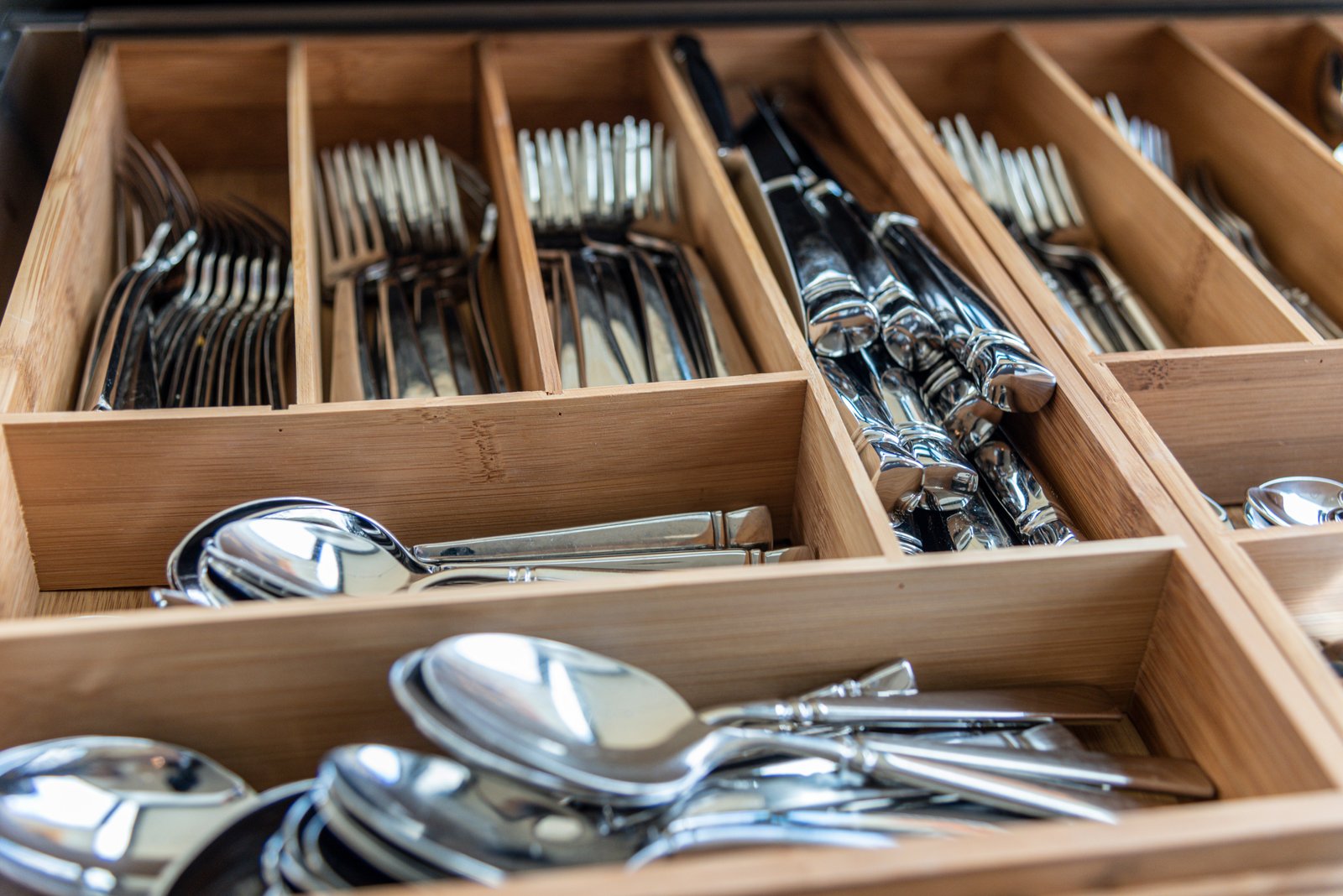
Overcoming these obstacles is the true test of a well-designed annealing line. It's a continuous battle against the laws of physics and chemistry, fought with precision engineering and intelligent automation. A manufacturer might have the best heating elements in the world, but if the strip flutters in the furnace, the result will be non-uniform grain structure. Likewise, the purest protective atmosphere6 is useless if a poorly designed seal allows oxygen to leak in at the critical moment. Each challenge represents a potential point of failure that can compromise the final product's quality and value. Let's dissect these core challenges to understand their root causes and why their resolution is paramount for any high-performance annealing operation.
The Battle for Strip Tension and Tracking
Maintaining unwavering strip tension is arguably the most critical and dynamic challenge in a continuous line. The steel strip, which can be hundreds of meters long and weigh several tons, must be pulled through the entire line with a precise amount of force. Too little tension, and the strip will sag, flutter, or droop, a condition known as catenary. This sag can cause the strip to drag on the furnace hearth or muffle, leading to severe scratches. In a vertical furnace, it can cause the strip to wander and contact the sidewalls. Too much tension, on the other hand, can stretch the thin, hot metal beyond its elastic limit, causing permanent elongation, a reduction in width (necking), or, in the worst case, a catastrophic strip break inside the furnace, leading to hours or even days of costly downtime.
This delicate balance is managed by a sophisticated system of bridle rolls, dancer rolls, and steering units. Bridle rolls are sets of large, driven rollers that grip the strip and provide the primary pulling force. Dancer rolls or loopers are movable rollers, often weighted or controlled by pneumatic cylinders, that physically move to absorb small, rapid changes in tension, providing real-time feedback to the drive motors. For instance, as the uncoiler's diameter shrinks, the motor speed must increase perfectly to maintain constant linear strip speed and tension; the dancer roll is what smooths out any minor mismatches in this process.
Achieving perfect tracking—keeping the strip centered along the entire line—is equally important. Even with perfect tension, minor imperfections in the strip's shape (like camber or a wavy edge) can cause it to drift sideways. This is where steering units, which actively pivot to guide the strip back to the center, are essential. A client of ours, processing wide stainless steel for architectural panels, was experiencing edge damage and uneven cooling. We installed an optical edge detection system linked to a fast-acting steering unit just before the furnace entry. This simple addition ensured the strip entered the furnace perfectly centered, resolving both issues and dramatically improving their prime yield.
The Unseen Enemy: Surface Contamination and Defects
The goal of bright annealing is a pristine, flawless surface. This goal is under constant threat from a host of invisible enemies. The primary culprit is residual lubricant or rolling oil left on the strip from previous processing stages. If this oil is not completely removed before entering the furnace, it will vaporize and thermally decompose (or "crack") in the hot atmosphere, depositing a layer of carbon soot onto the strip surface. This results in a dull, discolored, or smudged appearance that ruins the "bright" finish. This is why a robust, multi-stage pre-cleaning section is not an optional extra but a mandatory component of any high-quality bright annealing line.
Another source of contamination is the furnace atmosphere itself. The integrity of the furnace muffle and its seals is paramount. Any leak, no matter how small, can allow oxygen or water vapor from the ambient air to infiltrate the furnace. At annealing temperatures, chromium has a high affinity for oxygen. Even a few parts per million of oxygen can cause selective oxidation of the chromium at the grain boundaries, resulting in a "frosted" or dull surface that lacks corrosion resistance. We use advanced techniques like corrugated muffle designs for superior strength and sophisticated sealing systems—often multi-layer fiber curtains with continuous nitrogen purging—to create a positive pressure environment that ensures any leakage flows out, not in.
Finally, mechanical damage is a constant risk. Scratches, dents, and dings can be introduced by any component that touches the strip. This includes worn-out rollers, misaligned guides, or abrasive debris that has built up on contact surfaces. The risk is highest when the strip is hot and soft inside the furnace. This is the inherent advantage of a vertical furnace layout, as it minimizes physical contact. In horizontal lines, the choice of roller material (e.g., high-purity ceramics) and a rigorous maintenance schedule are critical to mitigating this risk.
Achieving Thermal Uniformity: A Constant Struggle
Delivering a uniform temperature across every square millimeter of the moving strip is a tremendous thermodynamic challenge. The goal is to ensure that the edges and the center of the strip reach the exact same peak temperature and are cooled at the exact same rate. Any deviation, or delta T ($\Delta T$), across the strip's width will result in non-uniform metallurgical properties. If the edges get hotter than the center, they may experience excessive grain growth, leading to a softer edge that can cause issues in slitting or forming. Conversely, if the center doesn't reach the target temperature, it may not be fully annealed, resulting in a hard streak down the middle of the coil.
This challenge is addressed through intelligent furnace design and advanced control systems. We utilize multiple, independently controlled heating zones along the length of the furnace. This allows for a precise thermal "profile" to be programmed, ensuring the strip is heated at the optimal rate. To combat the issue of heat loss at the edges of the strip (the "edge effect"), some furnaces employ edge-masking baffles or dedicated edge heaters to deliver extra energy to the outer portions of the strip.
The cooling process is just as critical. The rate of cooling determines the final grain structure and can affect the strip's flatness. A rapid, but controlled, cool is necessary. Our advanced cooling systems use high-velocity jets of the protective atmosphere gas, blown onto both sides of the strip through plenums. The design of these plenums and the control of the gas flow are engineered using Computational Fluid Dynamics (CFD) modeling to guarantee that cooling is perfectly uniform across the entire surface. This prevents thermal distortions that can lead to flatness defects like "center buckle" or "wavy edge," ensuring the final product is not only bright and soft but also perfectly flat.
Strip tension affects thermal uniformityTrue
Fluctuations in tension can cause strip wandering, leading to uneven heating as different parts of the strip move closer/farther from heating elements.
Furnace atmosphere purity is optionalFalse
Even minor oxygen leaks can cause chromium oxidation at grain boundaries, ruining surface quality and corrosion resistance - atmosphere integrity is critical.
What strategies can be implemented to overcome these challenges in annealing line layouts?
You're constantly firefighting the same issues: tension breaks, surface defects, and inconsistent results. This reactive approach is inefficient and costly. To truly gain control, you need to shift from fixing problems to proactively engineering them out of your process with a strategic, system-wide approach.
Effective strategies involve integrating advanced, closed-loop process control systems for tension and tracking, designing robust pre-cleaning and atmosphere sealing solutions, and employing multi-zone furnace construction with intelligent thermal modeling to guarantee uniformity and efficiency.
These strategies move beyond simple hardware choices and into the realm of intelligent system design. It’s not just about having a dancer roll; it’s about having a PLC that uses its feedback to control multiple drive motors in real-time. I worked with "SEA-Steel Co." to retrofit their line with such a system. The change was transformative. By creating a fully integrated control loop from uncoiler to recoiler, we stabilized their tension completely. This single strategic upgrade eliminated their strip wandering, which in turn solved their uneven heating problems and drastically improved their prime yield. It proves that tackling these challenges requires a holistic, automated approach.
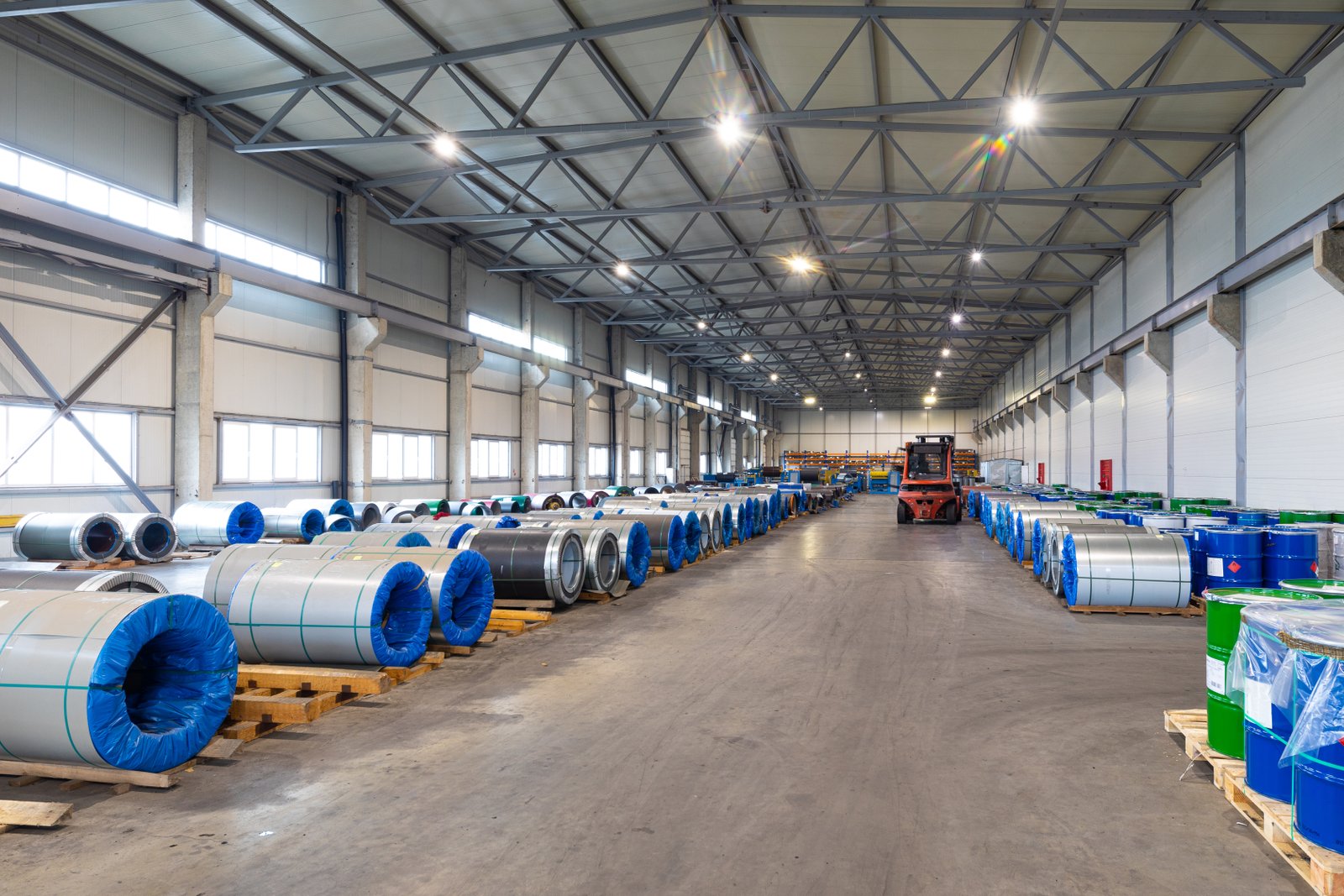
Implementing these strategies is what separates a world-class operation from an average one. It’s about creating a production line that is not only capable of producing high-quality material but does so reliably, efficiently, and predictably, shift after shift. This requires a commitment to investing in the "brains" of the line—the control systems and automation—as much as in the "brawn" of the furnace and mechanicals. It also demands a partnership with a furnace supplier who thinks like a process engineer, not just a fabricator7. By focusing on mastering control, designing for cleanliness, and engineering the thermal process with precision, manufacturers can build a formidable competitive advantage based on quality and efficiency.
Mastering Process Control Through Automation
The foundation for overcoming line challenges is a powerful and centralized automation system. Modern annealing lines should operate on a comprehensive Programmable Logic Controller (PLC) or Distributed Control System (DCS) that serves as the central nervous system for the entire operation. This system should integrate every key variable—strip speed, tension at multiple points, furnace zone temperatures, atmosphere gas flow and pressure, and cooling rates—into a single, cohesive control architecture. The era of operators manually adjusting drive speeds based on gut feeling is over; today's systems rely on data-driven, closed-loop control.
For tension control, this means using feedback from load cells and dancer roll positions to automatically and dynamically adjust the speed of the bridle and winder motors. The PLC runs a sophisticated algorithm (often a PID loop) that can anticipate changes and make micro-adjustments faster and more accurately than any human operator. I recall a project for a carbon steel processor where we upgraded their analog dancer control to a fully digital PLC-based system. Their previous setup had a tension variance of ±15%; the new system holds it within ±2%. This level of precision eliminated strip breaks during acceleration and deceleration, increasing their overall line uptime by over 10%.
This integration extends to fault diagnostics and predictive maintenance. A modern SCADA (Supervisory Control and Data Acquisition) system provides operators with a clear visualization of the entire line, with alarms for any parameter that deviates from its setpoint. Furthermore, by tracking motor currents, bearing temperatures, and vibration, the system can alert maintenance teams to potential failures before they occur. This shifts the maintenance strategy from reactive to proactive, maximizing equipment availability and preventing catastrophic failures.
Designing for Cleanliness and Atmosphere Purity
To win the war against surface contamination, the line must be designed with cleanliness as a core principle. This begins with an effective, multi-stage pre-cleaning section. A typical high-performance cleaning section includes a hot alkaline spray wash, a brush scrubbing unit, a multi-stage rinse with clean, deionized water, and a high-velocity air dryer. Each stage is critical for removing oils, fines, and other residues, ensuring the strip enters the furnace in a pristine state. The design must also prevent re-contamination, for example, by ensuring no hydraulic systems are located directly above the strip path where they could leak.
The furnace itself must be an impenetrable fortress protecting the sterile atmosphere within. The design of the muffle is key. We at AKS often use muffles fabricated from high-temperature alloys like RA330 and construct them with a corrugated "accordion" profile. This corrugation adds significant structural strength at high temperatures and allows the muffle to expand and contract thermally without buckling or cracking, preserving its integrity for years. The sealing system at the furnace entry and exit is equally vital. A simple fiber curtain is not enough. We employ multi-layer, pressurized seal boxes, which use a continuous flow of nitrogen to create an invisible barrier, ensuring the high-purity furnace atmosphere cannot escape and, more importantly, ambient air cannot enter.
Furthermore, managing the atmosphere gas itself is a critical strategy. This involves not only using high-purity gas sources but also incorporating gas purification and recycling systems. A hydrogen recycling system can take the used gas from the furnace, scrub it of any moisture or impurities it has picked up, and re-inject it, drastically reducing the consumption of expensive hydrogen. This not only offers a significant operational cost saving but also enhances quality by guaranteeing the atmosphere in the furnace remains consistently pure.
The Engineering of Cooling: The Key to Flatness and Finish
The final properties of the stainless steel strip are not set until it is fully cooled. The cooling section is therefore just as important as the heating section. The strategy here is to achieve rapid, yet perfectly uniform, cooling. This locks in the fine-grained microstructure created during annealing while preventing thermal stresses that can warp the strip. The premier technology for this is the jet cooler, which uses plenums filled with cooled protective atmosphere gas that is blasted at high velocity onto the strip surface.
The engineering behind these jet coolers is highly advanced. At AKS, we use Computational Fluid Dynamics (CFD) to model the flow of gas from the plenum to the strip surface. This allows us to optimize the size, spacing, and angle of the jet nozzles to eliminate any "hot spots" or "cold spots." The goal is to create a perfectly uniform heat transfer coefficient across the entire width of the strip. This precision cooling is what guarantees exceptional strip flatness, a critical quality parameter for customers who perform laser cutting or precision stamping.
The cooling strategy can also be segmented. The initial cooling phase, right after the soak zone, is the most critical and is typically the most aggressive. This is followed by a secondary, slower cooling section to bring the strip closer to ambient temperature before it exits the protective atmosphere. The table below illustrates a typical segmented cooling strategy:
| Cooling Zone | Method | Typical Temperature Drop | Primary Goal |
|---|---|---|---|
| Rapid Cool (Zone 1) | High-Velocity H₂/N₂ Jet Cooler | 1050°C to 600°C | "Freeze" the annealed microstructure |
| Intermediate Cool (Zone 2) | Moderate-Velocity N₂ Jet Cooler | 600°C to 250°C | Controlled cooling to prevent stress |
| Cool (Zone 3) | Radiant Cooling / Water-Jacketed | 250°C to <100°C | Safely bring strip to exit temperature |
By engineering the cooling process with this level of detail, we can consistently produce strip that is not only bright and soft but also exceptionally flat and stable, ready for the most demanding applications.
Closed-loop control improves tension stabilityTrue
The article demonstrates how PLC-based closed-loop systems can reduce tension variance from ±15% to ±2%, eliminating strip breaks.
Fiber curtains provide sufficient furnace sealingFalse
Modern systems require multi-layer pressurized seal boxes with nitrogen barriers, as fiber curtains alone cannot maintain atmosphere purity.
Which technological advancements aid in enhancing the efficiency of bright annealing processes?
Your current annealing line meets basic quality standards, but your energy bills are high and you're struggling to keep up with competitors who offer superior consistency. You risk being outmaneuvered if you don't embrace the technologies that are redefining efficiency and process control in the industry.
Key technological advancements enhancing bright annealing include AI-driven process optimization, advanced waste heat recovery systems, sophisticated sensor technology for predictive maintenance, and the use of computational modeling (CFD/FEA) in furnace design to ensure optimal performance from day one.
These are not futuristic concepts; they are practical tools that we are integrating into our furnace designs at AKS to deliver tangible returns. Imagine a system that learns from every coil you process and automatically refines its parameters for better quality and lower energy use. Or a furnace designed with a dual-layer chamber that re-uses its own waste heat, cutting your gas consumption significantly. This is the new reality of smart manufacturing. By leveraging these innovations, you can transform your annealing line from a simple heat treatment unit into a highly efficient, intelligent, and profitable production asset.
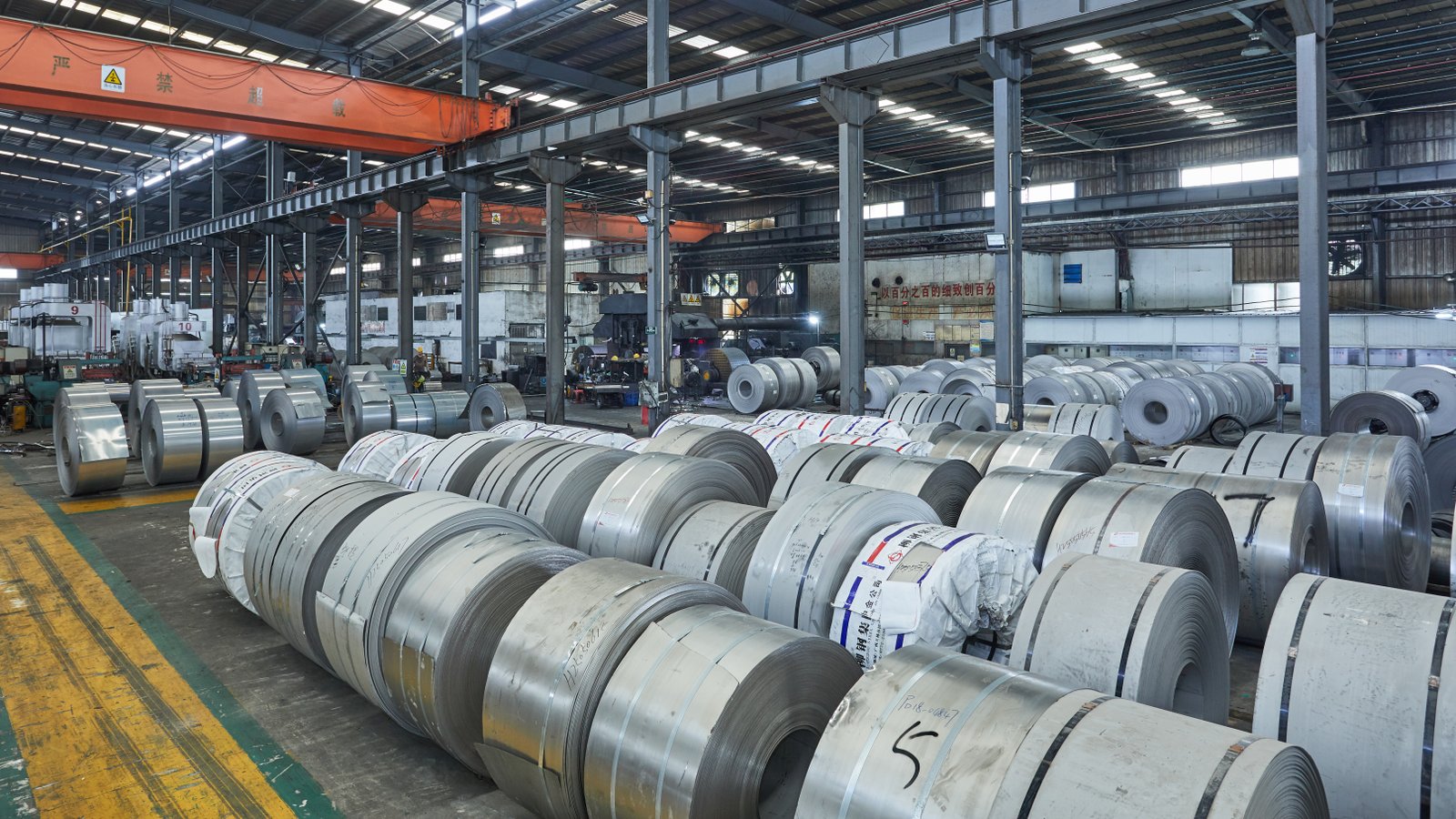
The push for greater efficiency, tighter tolerances, and more sustainable manufacturing has ignited a wave of innovation in industrial furnace technology. Stagnation is no longer an option for producers who want to compete on a global scale. The advancements we are seeing today are moving beyond incremental improvements and are fundamentally changing how we design, operate, and maintain continuous annealing lines. These technologies offer a multi-faceted approach to enhancement: they reduce operational costs through energy savings, they improve product quality and consistency through smarter control, and they increase uptime through greater reliability. Embracing these tools is essential for any forward-thinking metal processor looking to secure a long-term competitive edge.
The Rise of Industry 4.0: AI and Predictive Analytics
The integration of Industry 4.0 principles is revolutionizing furnace control. The most impactful advancement is the application of Artificial Intelligence (AI) and Machine Learning (ML) to process optimization. A traditional PLC system operates on fixed setpoints and logic. An AI-driven system, however, can analyze vast amounts of historical and real-time data—including incoming strip properties, thermal profiles, gas chemistry, and final quality measurements—to identify complex patterns and correlations that are invisible to human operators. It can then recommend or automatically apply optimized setpoints in real-time to maximize quality and minimize energy consumption for each specific coil.
This "digital twin" approach allows the system to learn and adapt. For example, if the AI detects a subtle trend of the strip center being slightly under-annealed on wider coils run at high speeds, it can proactively increase the power to the central heating zone for the next similar coil, preventing a quality issue before it happens. This moves the process from reactive control to predictive control, leading to unprecedented levels of consistency.
Furthermore, predictive maintenance is another key aspect of Industry 4.0. We now embed sophisticated sensors throughout the annealing line—vibration sensors on fan and motor bearings, pressure transducers in gas lines, and thermal cameras monitoring the furnace shell. The data from these sensors is fed into an analytics platform that can detect the earliest signs of component degradation or impending failure. Instead of waiting for a bearing to seize and cause a major breakdown, the system can flag it for replacement during the next scheduled stop, transforming maintenance from a costly, unscheduled event into a planned, efficient activity.
Innovations in Energy Efficiency and Sustainability
With rising energy costs and increasing environmental regulations, thermal efficiency is no longer just a "nice to have"—it's a critical performance metric. At AKS, a major focus of our R&D is on pioneering systems that squeeze more value from every unit of energy. One of our most effective innovations is the Waste Heat Recovery system. In a traditional furnace, a huge amount of thermal energy is lost in the hot exhaust gases. Our designs capture these hot flue gases and pass them through a heat exchanger to preheat the combustion air before it enters the burners. Preheating the air means the burners need less fuel to reach the target temperature, resulting in direct and significant gas savings.
We take this a step further with our Dual-Layer Furnace Chamber design. This involves constructing the furnace with an inner heating chamber (the muffle) and an outer shell. The hot exhaust gas is circulated in the space between these two layers. This not only preheats the combustion air but also uses waste heat to warm the muffle externally, creating a "hot face" design that reduces the thermal load on the primary heating elements and improves temperature uniformity. Combined, these waste heat recovery methods can improve the overall thermal efficiency of a furnace by up to 20%, offering a rapid return on investment through energy savings.
Another key area of innovation is in combustion control itself. We use high-efficiency, recuperative burners and pair them with a precision gas/air ratio control system. Using feedback from oxygen sensors in the flue gas, the system continuously adjusts the mixture to ensure complete combustion with minimal excess air. Incomplete combustion wastes fuel, while too much excess air wastes energy heating up unnecessary nitrogen. By maintaining the stoichiometric ratio perfectly, we ensure every molecule of fuel is converted into useful heat.
Advanced Modeling and Simulation
Perhaps one of the most significant yet unseen advancements is the use of advanced computer modeling in the furnace design stage. Before a single piece of steel is cut, we can build a complete, virtual prototype of the annealing line inside a computer. Using Computational Fluid Dynamics (CFD), we can simulate the flow of protective atmosphere gas inside the furnace muffle and cooling sections. This allows us to visualize the flow patterns, identify any areas of turbulence or stagnation, and optimize the placement of gas inlets and outlets to ensure a stable, pure atmosphere envelops the strip at all times.
Simultaneously, we use Finite Element Analysis (FEA) to model the thermal and structural behavior of the furnace components. We can simulate the heat transfer from the elements to the strip, predicting the exact temperature distribution across the strip's width to within a few degrees. This allows us to design the heating zones and cooling plenums with incredible precision, virtually guaranteeing thermal uniformity before the furnace is even built. FEA is also used to analyze the thermal expansion and stress on the furnace muffle and structural frame, ensuring the design is robust and will have a long, reliable service life.
This "simulation-first" approach de-risks the entire project for our clients. It eliminates the guesswork and trial-and-error that was common in older furnace design methods. By resolving potential issues with flow, temperature uniformity, and structural integrity in the digital realm, we can deliver a furnace that is optimized from day one. This leads to faster commissioning, better performance, and the confidence that the significant capital investment will deliver the promised results.
AI optimizes bright annealing processesTrue
AI-driven systems analyze data to automatically refine parameters for better quality and energy efficiency in bright annealing.
Traditional furnaces recover most waste heatFalse
Traditional furnaces lose significant thermal energy in exhaust gases, while modern systems recover this heat through advanced designs.
Conclusion
Optimizing your continuous bright annealing line is a holistic endeavor. Success hinges on a intelligently designed layout, precise control over key parameters like tension and atmosphere, and the integration of modern technologies. View this not as an expense, but as a strategic investment in superior quality and efficiency.
-
Learn the operational parameters that optimize steel strip quality and consistency ↩
-
Discover how combining skills enhances precision and efficiency in manufacturing ↩
-
Detailed explanation of each zone's role in annealing processes ↩
-
Learn how furnace orientation affects production efficiency and material quality ↩
-
Explore unique furnace layouts for specific processing requirements ↩
-
Discover why maintaining a pure atmosphere is crucial in annealing ↩
-
Discover how collaboration with knowledgeable suppliers impacts production efficiency and product quality ↩
